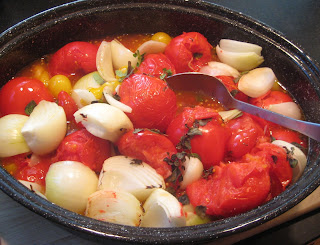As a result, even though basil is not in season, if you can snag a fresh bunch at the market, I suggest making a large batch of pesto. Pesto is incredibly versatile. It can be used to add some zip to an otherwise bland sandwich, particularly if you are still eating turkey left over from Thanksgiving like I am. It can be tossed with pasta or salad along with any other favorite additions for a quick dinner. And, it can be used in endless ways in appetizers. You can be creative, but in a bind all you need is a cracker, a favorite cheese, and a dab of pesto. Done.
I use pesto to flavor soups and try to make a pot of soup nearly every week this time of year. Then, I know I have a healthy and satisfying lunch at the ready. When I really feel decadent, I will buy a baguette, break off a chunk, and dip it right into the pesto for a special side to accompany my bowl of soup. In any event, having a container of pesto on hand simply makes the holidays easier, tastier, and greener. So seasonal, after all.
Classic Pesto
3 cloves garlic, raw or toasted
¼ cup pine nuts, raw or toasted
½ teaspoon salt
2 cups packed basil leaves
½ cup olive oil
½ cup Parmigiano-Reggiano, grated
Ground black pepper
- Process garlic, pine nuts,
and salt in a food processor until smooth. Scrape down sides.
- Add basil and pulse until
no whole leaves remain. Scrape down sides.
- With the machine running,
add olive oil, pouring in a slow and steady stream. Scrape down sides.
- Add cheese and pulse for a
few seconds until well blended. Season with additional salt and ground
black pepper to taste.
Note: Toasting will deepen the flavor of the pine nuts and
take the edge off of the garlic. If you are freezing your pesto, you can blanch
your basil for 30 seconds prior to processing the pesto. This will maintain the
bright green color of pesto, which will otherwise darken as it freezes.











































